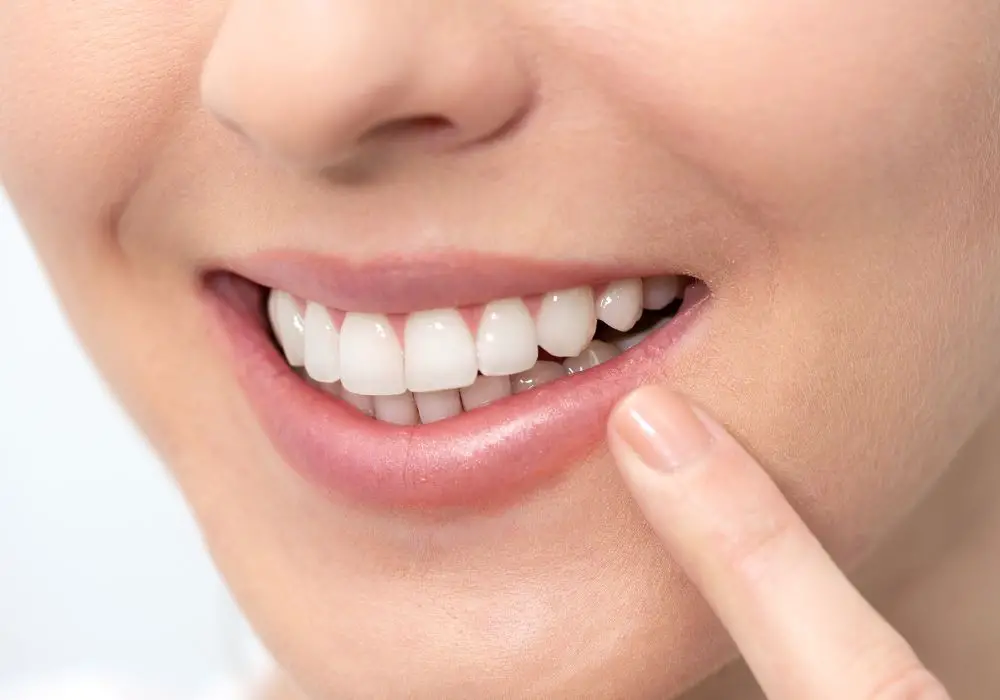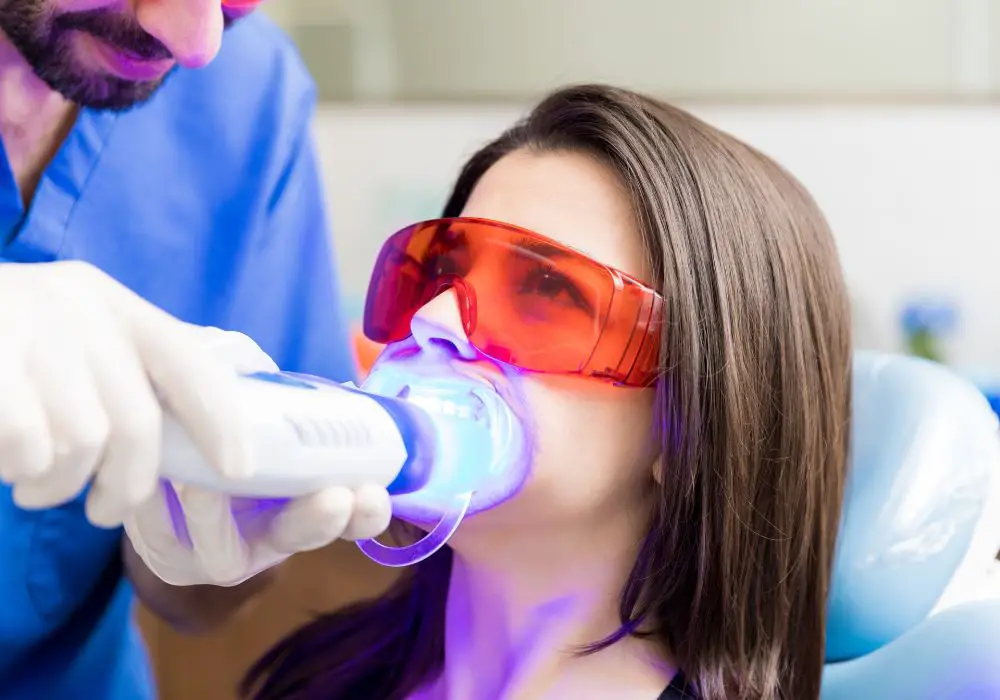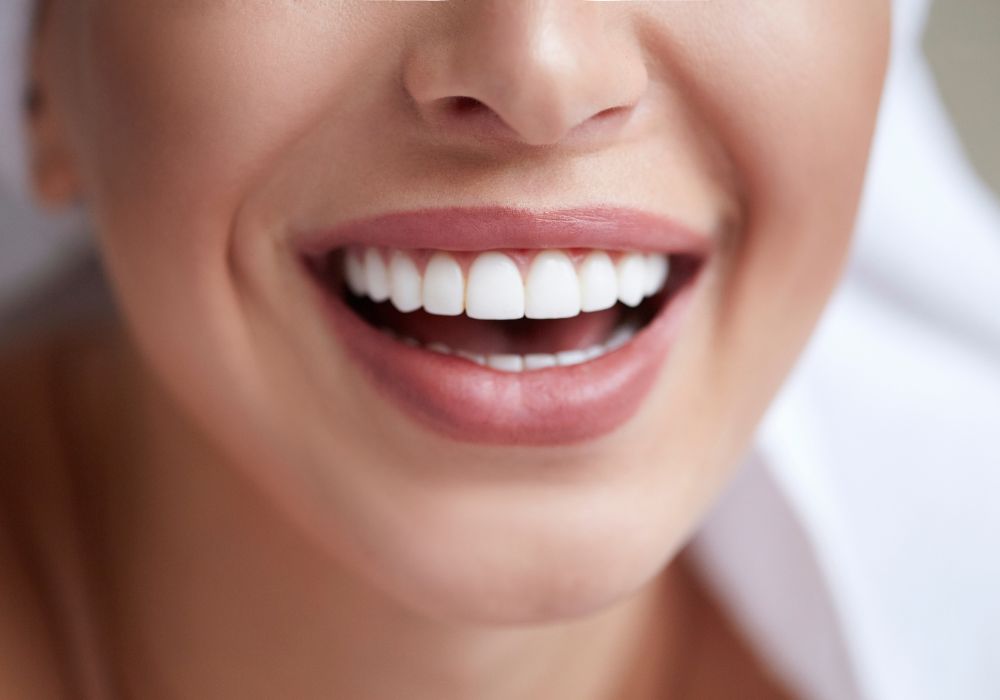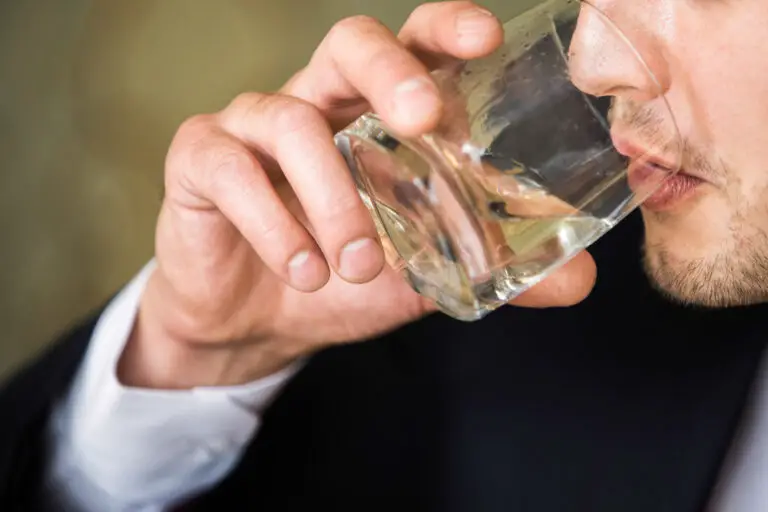Having a bright, white smile can do wonders for your confidence and appearance. But when you have porcelain veneers, crowns, or other dental work, you need to take special care when using teeth whitening products and procedures. Whitening porcelain requires a cautious approach to avoid potentially damaging the restorations.
In this in-depth guide, we will cover:
- Causes of Discoloration in Porcelain Teeth
- Risks Associated with Whitening Porcelain
- Professional In-Office Whitening Treatments
- At-Home Whitening Options for Porcelain
- Lifestyle Habits to Avoid Discoloration
- Long-Term Maintenance Between Whitening Sessions
- Answers to Common Questions About Whitening Porcelain
Let’s start by looking at why porcelain dental work can become discolored and appear darker over time.
Causes of Discoloration in Porcelain Teeth

When porcelain veneers, crowns, and other dental restorations are first placed, they match the surrounding natural teeth. But over time, they can become stained and appear much darker and yellower in contrast to your natural tooth color.
There are several reasons this discoloration in porcelain restorations can occur:
- Thinning of the glaze layer – Porcelain is coated in a glossy outer glaze that gives it its luminous shine and smooth texture. As this layer thins over years of use, it makes the porcelain more porous and prone to absorbing stains.
- Staining from foods and drinks – Chromogens found in coffee, tea, red wine, and other dark beverages are absorbed into the microcracks and pores of porcelain, causing yellow-brown discoloration. Soy sauce, curries, and berries can also stain.
- Smoking – Tobacco smoke permeates the crystalline structure of porcelain and causes brownish staining, especially along the gumline. The nicotine also turns saliva into yellow plaque.
- Age and wear – Simple aging, exposure to UV light, acidic foods, tooth grinding, and other wear and tear erodes the glaze coating over time, increasing porosity.
- Improper cleaning – Harsh oral hygiene habits like aggressive brushing and overuse of abrasive toothpaste slowly strip away the protective glaze layer.
- Chemistry issues – In some cases, the original porcelain shade chosen by the dentist ends up being a poor match as your teeth shift in color. Prolonged UV light exposure during the curing process can also cause unanticipated discoloration issues.
As you can see, there are many potential causes of porcelain staining and discoloration. The good news is, it can usually be corrected with proper whitening techniques. However, special care is required.
Risks Associated with Whitening Porcelain

While various methods exist to whiten discolored porcelain teeth, they do carry potential risks of which you must be aware:
- Surface damage – Harsh whitening chemicals, abrasive pastes, and aggressive brushing can damage the glossy glazed surface, causing porcelain restorations to appear frosted, pitted, and rough.
- Bond breakdown – Some whitening agents can penetrate beneath porcelain veneers and crowns, weakening the adhesive bond to the underlying tooth. This could result in dental work becoming loose, needing replacement.
- Increased porosity – If the protective glaze layer gets stripped away, it increases the porosity of the porcelain, allowing it to become stained again even more quickly.
- Gum and tooth sensitivity – Whitening products that leach underneath dental restorations can irritate and inflame the gums and inner dentin of the teeth.
- Mismatch – Aggressive whitening of just the natural teeth without properly treating the bonded porcelain can result in an obvious mismatch in color.
To avoid these risks, have your dentist assess your porcelain restorations prior to using any whitening treatments. Get their advice and supervision on the safest, most conservative options for your situation.
Professional In-Office Whitening Treatments

Visiting your dentist for professional in-office whitening is the gold standard for safely whitening porcelain dental work:
- A thorough exam is performed to evaluate your oral health and existing restorations.
- Higher concentrations of whitening gel, typically 15-35% hydrogen peroxide, are applied directly to teeth.
- Your gums are protected with barrier agents like rubber dams or desensitizing gel.
- Specialized curing lights are used in conjunction with the gel to accelerate the whitening process.
- Additional rounds of gel may be applied during a single visit to maximize results.
- Multiple visits spaced 1-2 weeks apart may be necessary for significant discoloration.
- To lock in the effects, take-home trays with whitening gel are often provided for continued use.
- Can safely lighten both natural teeth and bonded porcelain restorations.
Professional in-office treatments offer the highest level of safety and minimizing risk to existing dental work. However, they tend to be more expensive than DIY methods. Many dentists offer payment plans to help offset the cost.
At-Home Whitening Options for Porcelain

In addition to in-office treatments, there are some over-the-counter at-home whitening products deemed gentle enough for use on porcelain restorations:
Whitening Toothpastes
- Use mild abrasives like silica and baking soda instead of bleaching agents.
- Can provide a moderate whitening effect by removing surface stains.
- Best suited for maintaining brightness between other whitening treatments.
Whitening Strips
- Use flexible strips coated with lower concentrations of hydrogen peroxide.
- Must remain firmly in place and not overlap onto gums.
- Newer products claim safety for crowns and veneers but check first.
Whitening Trays
- Involve custom-fitted trays filled with peroxide gel applied to teeth.
- Allow you to isolate solution only to teeth needing whitening.
- Provide more noticeable lightening than strips when used for longer duration.
LED Lights
- Blue LED light helps accelerate and enhance results of at-home gels and strips.
- Must be engineered specifically for use on dental porcelain.
- Use cautiously and avoid overexposure.
While considered safer and more conservative, at-home methods do carry more risks of potential harm to dental work than professional whitening overseen by your dentist. Consult your dentist first about DIY options and follow directions closely.
Lifestyle Habits to Prevent Discoloration

In addition to active whitening treatments, you can help keep porcelain dental work brighter longer by modifying certain lifestyle habits:
- Quit smoking – Smoking is the #1 cause of severe staining and discoloration of dental work. Quitting can help prevent yellowing.
- Limit staining foods/drinks – Beverages like coffee, tea, cola, and red wine promote staining. Drink with a straw to minimize contact.
- Protect from wear – Avoid chewing on hard objects, ice, or other foods that could chip or crack dental porcelain. Use mouthguards if you grind teeth.
- Gentle oral hygiene – Brush twice daily with a soft-bristled brush and non-abrasive toothpaste. Avoid aggressive scrubbing.
- Professional cleanings – Get a dental cleaning/polishing every 6 months to remove hardened plaque that can stain porcelain.
- Cover your mouth – Always cover your mouth when coughing, sneezing, or vomiting to protect porcelain from stomach acid exposure.
Being proactive with your habits and lifestyle makes a big difference in keeping your porcelain dental restorations whiter and brighter long-term.
Long-Term Maintenance Between Whitening Sessions

To maintain your results from professional or at-home whitening treatments, consider these long-term maintenance tips:
- Use custom-fitted whitening trays periodically with low-concentration gel to freshen results as needed.
- Attend follow-up whitening sessions with your dentist every 12-24 months or as recommended.
- If you smoke, enroll in a smoking cessation program to quit and prevent further discoloration.
- Have your dentist assess the condition of the glaze coating on porcelain restorations annually and re-glaze as needed.
- Stick to non-abrasive toothpastes designed for removing stains safely on porcelain.
- Rinse with water immediately after consuming staining foods or drinks.
- Chew gum with xylitol to stimulate saliva flow, which helps prevent stains from adhering inside the mouth.
By combining periodic touch-up whitening sessions with good oral hygiene habits and lifestyle adjustments, you can enjoy naturally white and brilliant porcelain restorations for years to come.
Answers to Common Questions About Whitening Porcelain
Let’s wrap up with answers to some frequently asked questions:
Q: Can I use drugstore whitening strips on my porcelain veneers?
A: Maybe, but check the product labeling first. Some newer strip formulas claim to be safe for porcelain restorations. Use cautiously and stop if you see any ill effects.
Q: Does activated charcoal whiten porcelain teeth safely?
A: No, abrasive charcoal pastes are too harsh for dental porcelain. They could scratch the surface and cause permanent damage. Avoid them.
Q: Will a teeth whitening pen work on just one discolored crown?
A: Whitening pens allow you to target treatment only on the discolored porcelain without lightening the natural surrounding teeth. Take care not to overlap onto gums.
Q: Can LED lights damage my porcelain veneers?
A: Blue light whitening systems designed for use on porcelain are safe if used as directed. But take care not to over expose teeth to UV light which could potentially degrade the material over time.
Q: How white can you make porcelain teeth?
A: Professional in-office treatments generally yield the whitest color change, up to 8 shades lighter. At-home methods produce more moderate results. The degree of lightening depends on the original shade and extent of staining or discoloration present.
Q: Will whitening treatments weaken porcelain restorations?
A: Generally, no. Safe whitening methods done properly will not affect the structure or strength of properly bonded high-quality dental porcelain. But more caustic DIY treatments could potentially penetrate and weaken the bond to the underlying tooth over time. So professional guidance on whitening methods and products is always best.
Conclusion
Porcelain veneers, crowns, and other dental restorations can become discolored and stained over time. Special care must be taken when using teeth whitening procedures and products to avoid damaging the porcelain. Professional in-office whitening overseen by your dentist is the safest, most effective method, but some conservative at-home options also exist. Maintaining good lifestyle habits combined with periodic whitening touch-ups and professional cleanings can keep your porcelain restorations bright, white, and naturally beautiful for years.
Let me know if you would like me to expand on any part of this comprehensive guide further. I aimed to provide helpful details while remaining easy to read and understand. Please feel free to provide any feedback!







